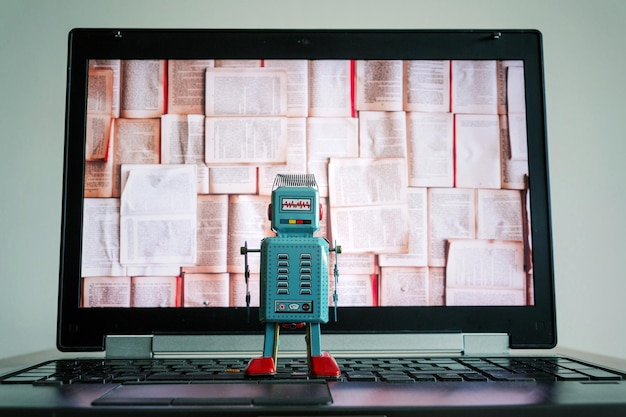It's not as if you can always trust the author's honest word when it comes to scientific publications. Today, artificial intelligence presents us with a new, rather dubious ability: it creates fake studies, invents authors and ensures that nobody knows exactly what is really real. It sounds like something out of a science fiction film, but unfortunately it is bitter reality. The whole thing has a crucial challenge: while AI is a great help in many areas, it only makes everything more complicated when it comes to manipulating scientific credibility. And the big game of trust and fake research naturally also has practical consequences - from falsified results to fake citations that turn science on its head. But don't panic! In this article, we look at the fascinating, sometimes frightening world of AI-generated fakes in science - tongue in cheek, of course. Who knows, maybe it's also an opportunity to scrutinise what's real and what's not even more closely in the future.
AI-generated fakes in science: the new unthinkable reality
The fact that AI can now not only write texts but also help to falsify entire research papers comes as a shock to many scientists and academics. The so-called AI-generated forgeries in science have become a bitter reality. They creep unnoticed into the world of research, producing supposedly convincing results that turn out to be fake in retrospect. These are not just simple attempts at fraud, but also sophisticated chains of fictitious authors, brilliant-looking but completely invented sources and ghostwritten research that was only thought up by an algorithm. The result? Trust in science decreases, research becomes more difficult and the risk of falling for fake studies increases exponentially. But how is this even possible? What are the main areas of AI-generated fakes in science? Let's take a closer look at this.
How AI-generated fake studies are turning science on its head
In the world of research, credibility is the be-all and end-all. But AI manages to produce fake studies so convincingly that hardly anyone can recognise what is real and what is not. With the right algorithm, a study can be provided with invented data, hidden plagiarism and even invented citations in no time at all. For the layperson or even the expert, it is becoming increasingly difficult to verify authenticity.
The tricks of AI: invented authors, ghostwriting, ghost review
This is where it gets really adventurous: AI programmes invent completely credible authors whose names no one in science has ever heard of. This creates a kind of shadow universe of research that is difficult to see through. Ghostwriting, in which the AI does the work in the background and conceals the real authors, is not a measure, but a real danger. Even peer review, i.e. the usual quality controls, can be undermined by AI-generated fake content - you think you're listening to a real expert opinion, when in reality it's just machine-generated.
What are the risks and benefits of AI-generated fake studies?
Of course, there is not just black and white. The discussion about AI-generated fakes in science is complex and multi-layered. On the one hand, fake studies are a threat to good old science; on the other hand, they also offer opportunities, for example in the rapid generation of data or in the testing of systems for recognising fake articles. Here is a brief overview:
Risks: The dark side of AI counterfeiting
- Loss of trust in scientific publications
- Spreading false knowledge that influences real decisions
- Risk of manipulation in sensitive research areas
- Creeping exhaustion of the diversity of sources, as everything can become "fake"
- Transition from fake to real harm - e.g. in drug trials
Advantages: Why AI counterfeits also have potential
- Test options for detection systems against fake content
- Rapid generation of prototypes or ideas for research approaches
- Support with literature research - theoretical
- Improving AI to better recognise fake content in future
The role of science: between control and transparency
So what can be done? Science is taking countermeasures: More transparency, better filter software and stronger monitoring are needed. There also needs to be clear labelling of when AI is involved. This is the only way research can remain credible and society can distinguish between real and fake facts - before everything disappears into data nirvana.
The future of AI counterfeiting in research
One thing is clear: AI and science are inextricably linked. The only question is how we can keep the negative aspects under control and utilise the positive aspects. If we succeed in developing ever better AI filters against fake studies, we might even one day live in a world in which fakes no longer get through so easily. Until then, we must remain vigilant, scrutinise and not feed the dark AIs with mere trust.
